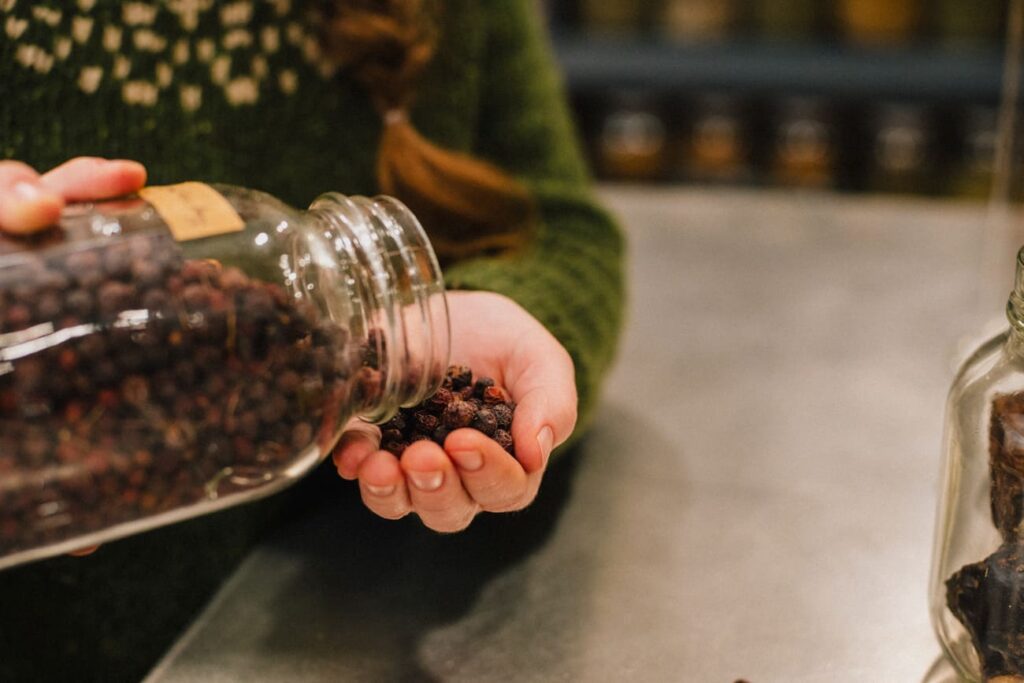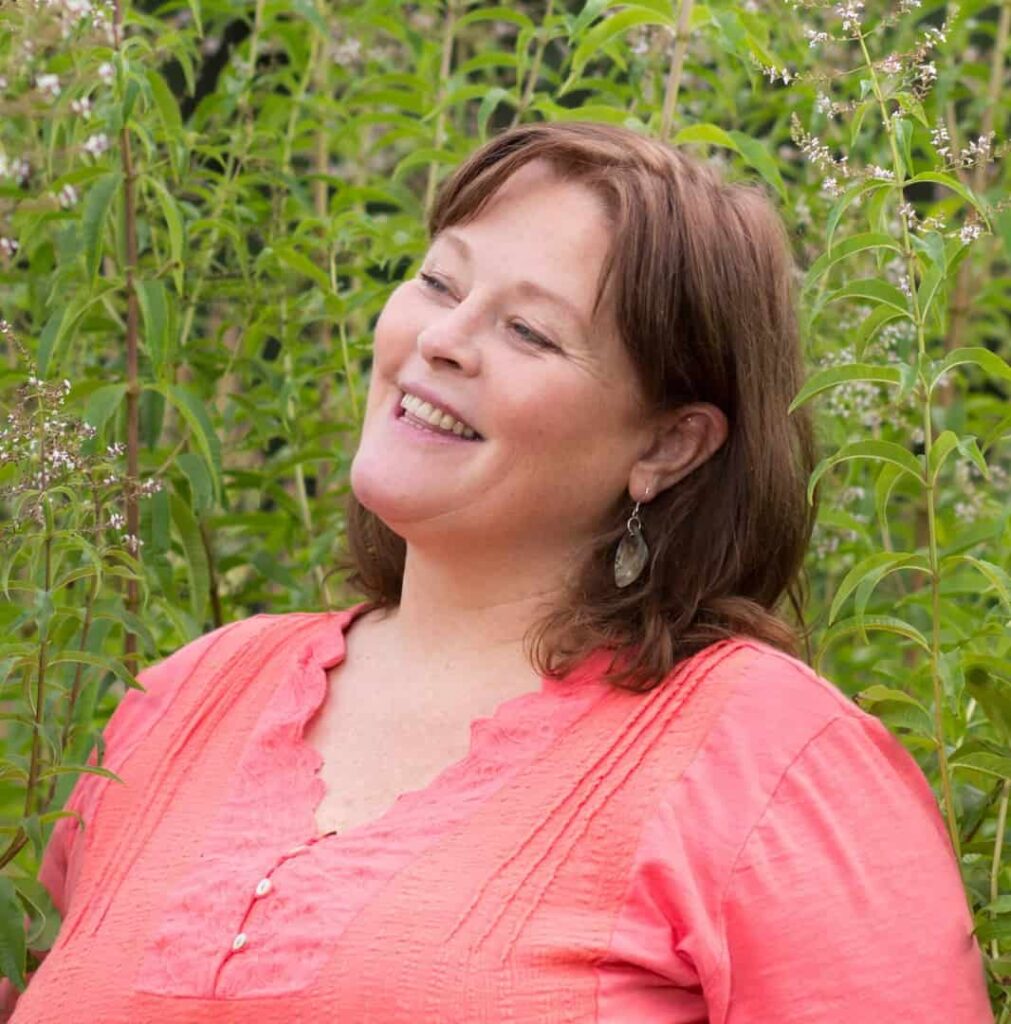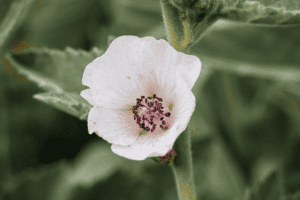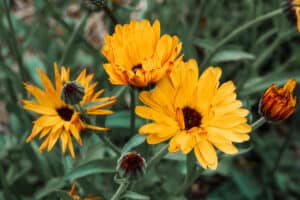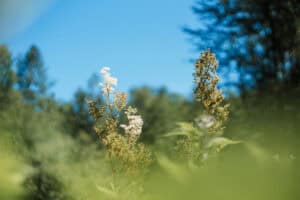Kami Mcbride is an herbalist and author who has helped thousands of people over the last thirty years with her practice. Her expertise lies with herbal-infused oils, a simple and practical medicine-making technique that helps you heal yourself and connect with the Earth.
In today’s blog post, you’ll learn:
- About Kami’s inspiring path to herbalism
- The difference between herbal-infused oils and essential oils
- What makes herbal infused oils such a unique herbal medicine
- Ways to incorporate herbal infused oils into your daily life
- How to nurture a sustainable herbal practice
Table of Contents
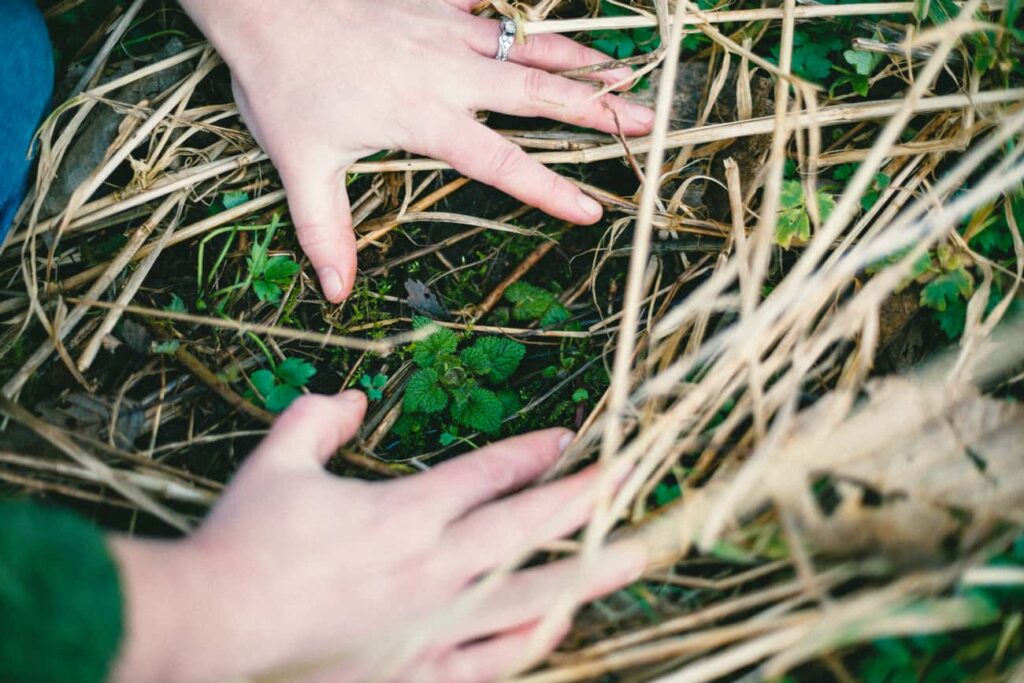
Origin Story
Kami’s story began at the age of eight when she took her first herb walk at summer camp. Coming home and brimming with excitement, her enthusiasm was not matched by her family. You see, at that time, herbalism was not accepted, let alone celebrated. Despite this, she held onto this seedling of truth that would ultimately lead her to be where she is today – a woman who has helped thousands of people in the past thirty years with her passion for herbalism, herbal-infused oils, and rekindling a relationship with the Earth.
When she began her journey in the early eighties, there wasn’t yet a reflection of what an herbalist was, let alone did. It’s hard to believe that’s how it was with today’s level of understanding and access to herbalism. However, back then, you had to dig really deep to find information that would propel you forward on your plant path.
One day in 1986, her friend at The California School of Herbal Studies convinced her to join a class, resulting in her learning with Rosemary Gladstar. Feeling deeply impacted by her experiences learning about the plants, she considered staying in the program instead of returning to school. However, she turned her car around, followed through, graduated, and made her way back to The California School of Herbal Studies after obtaining her degree.
Her decision to walk the plant path was not well received – her dad wouldn’t talk to her, and her grandparents simply did not understand. Herbalism was completely outside of cultural boundaries and family bonds at that time, and undeterred, she held onto that feeling and followed her passion. After studying herbalism full-time for eight years, in 1994 she had a vision: To gather women and make medicine together to revolutionize our culture into one that loves and honors the Earth – something that starts with women making medicine together. She brought that vision to life and has been doing so ever since.
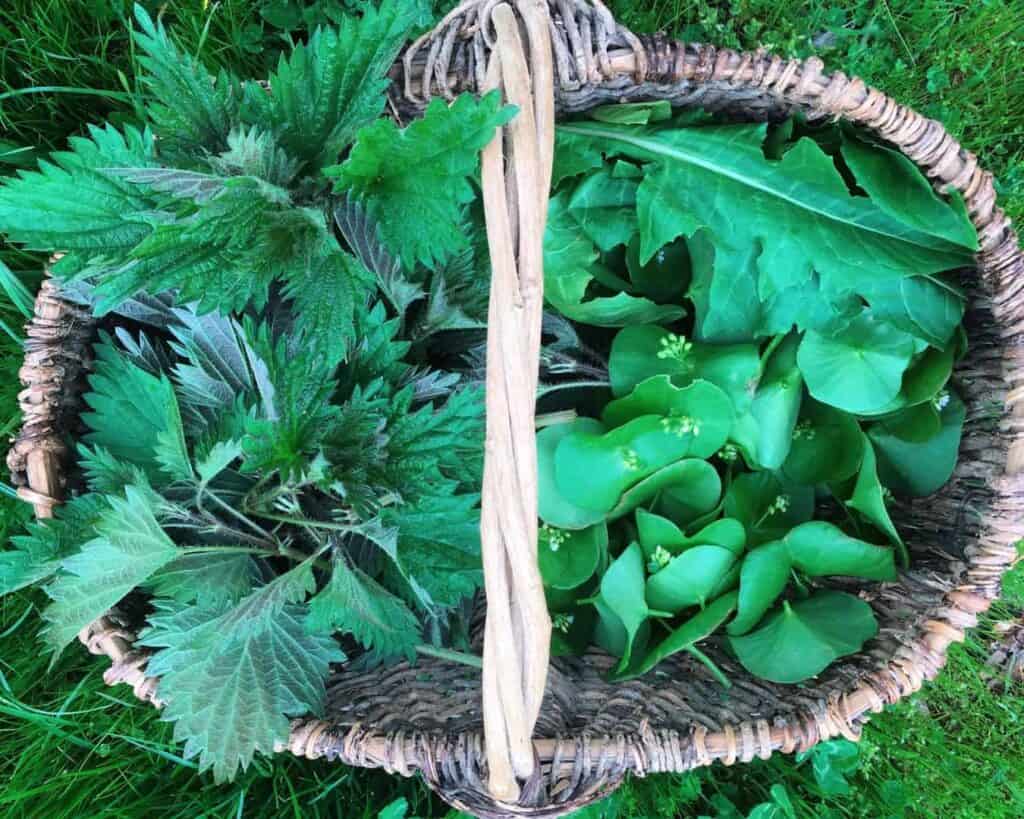
Living in Harmony With the Earth
“It’s in our bones to harvest the gifts of the Earth and say thank you by creating nourishing gifts that feed life. We bring the Earth into our home, we create healing remedies, and we feed life together.” – Kami McBride
How do you inspire a culture driven by consumption and waste to live harmoniously with the Earth?
This was a question Kami inevitably faced on her herbal path. It was at the gatherings hosted by Rosemary Gladstar that she began thinking about “seven generations in mind,” that is, considering how you can meet your needs today to ensure that future generations can meet theirs as well. She wanted to make sure that the way she and others worked with plants was sustainable and in harmony with nature. With this in mind, she began teaching herbalism classes and made a point to watch and notice what made people fall in love with herbalism and fall in love with the Earth.
She noticed that when people came together to make medicine, the rhythm of cutting, garbling, and chopping created an alpha state. This altered state allowed people to tap into different modes of thinking and solve old problems in creative new ways. By creating community and gatherings centered around medicine making, you bring your hearts and hands back into alignment with the Earth, which leads to the development of a new culture inspired by sustainability.
Remembering that community is an essential part of herbalism can help you drop into your heart space, slow down, enjoy, and reclaim your sense of calm when starting on your herbal path. When people first discover herbalism, they often feel overwhelmed because they try to “download” generations of knowledge within a short amount of time. Kami’s advice is to remember that herbalism is a generational art. You need time to relax into it, and you might not even learn it all in one lifetime! You are a part of a cultural arc where herbalism is being revived and remembered after being forgotten for a long time.
When the Earth calls you, you may not have the support you need to begin an herbalism program. However, you can honor this calling by meeting up with even a single friend each month to slowly form medicine circles. Find your people, gather together, and celebrate the harvest. Your path will unfold and open to you as you listen to the calling of your heart.
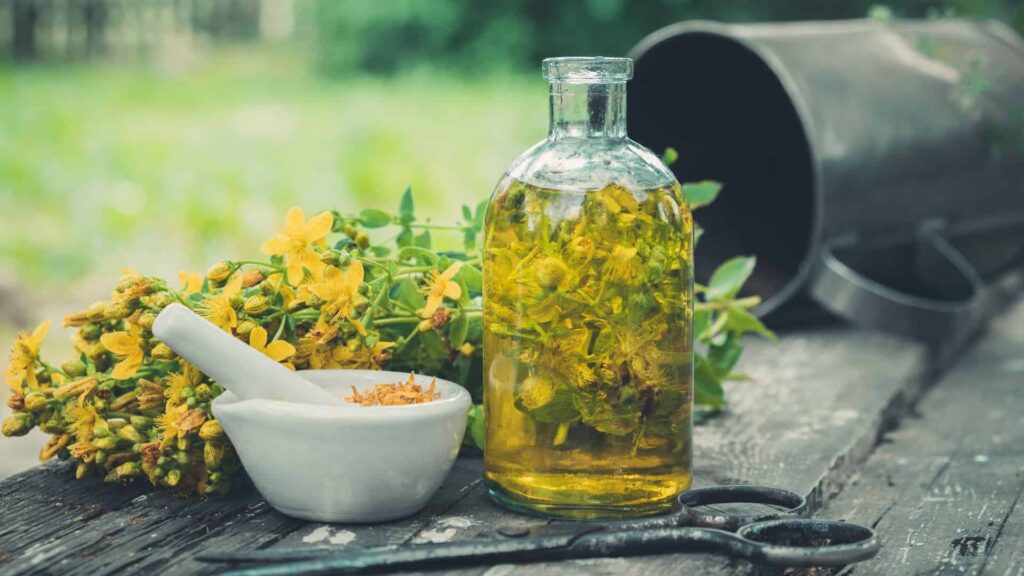
Herbal Infused Oils
“Herbal-infused oils are the herbalist’s best kept secret. You know, it hasn’t hit the mainstream because you can’t make that much money off of it, like essential oils.” – Kami McBride
Kami was inspired to make herbal-infused oils when she was in massage school. She learned from Rosemary Gladstar that you should never put products on your body that you can’t eat. After seeing that most common massage products were made from toxic petroleum ingredients, she started preparing her own herbal-infused oils to use instead.
After using St. John’s oil (Hypericum perforatum) and Lavender oil (Lavendula spp.) on her massage clients, she saw that people were achieving deeper states of relaxation, their whiplash disappeared, and they felt significantly better. Once she saw how powerful and effective herbal-infused oils were, she began making them consistently and used them in her massage and herbal practice regularly. Soon enough, her herbal-infused oils caught wind, and people could not get enough of them, buying them left and right. Today, Kami offers workshops teaching you how to make them for yourself!
Herbal Infused Oils vs Essential Oils – What’s the Difference?
Herbal-infused oils are a tactile way to work with a plant, and it’s easier to relate to something that smells good, feels great, and you can tangibly work with. As a result, they are an excellent opening to the practice of medicine making without feeling overwhelmed or intimidated. Although herbal-infused oils and essential oils sound similar, they are completely different forms of herbal medicine.
Essential oils are produced through the steam distillation of large amounts of pounds of plant parts. This process can create a serious dent in our ecosystem, especially if you are purchasing or making essential oils using endangered plants or those that belong to threatened ecosystems.
Essential oils are so potent that you should only use them in small amounts. Kami shared that she has several colleagues who have been working with essential oils for the past twenty to thirty years and now cannot do so without wearing a mask and gloves because they have become too sensitized – they are that powerful!
On the other hand, herbal infused oils are made by using the entire plant material and infusing it into a carrier oil or base oil, such as olive oil or sunflower oil. Unlike essential oils, you do not need to use a significant amount of plant material to produce a beautiful and effective infused oil. Moreover, you can safely use them every day and in large amounts without becoming oversensitized. Herbal-infused oils are incredibly versatile, and you can use them in abundance as the foundation of your salve, lip balm, body butter, and other care products.
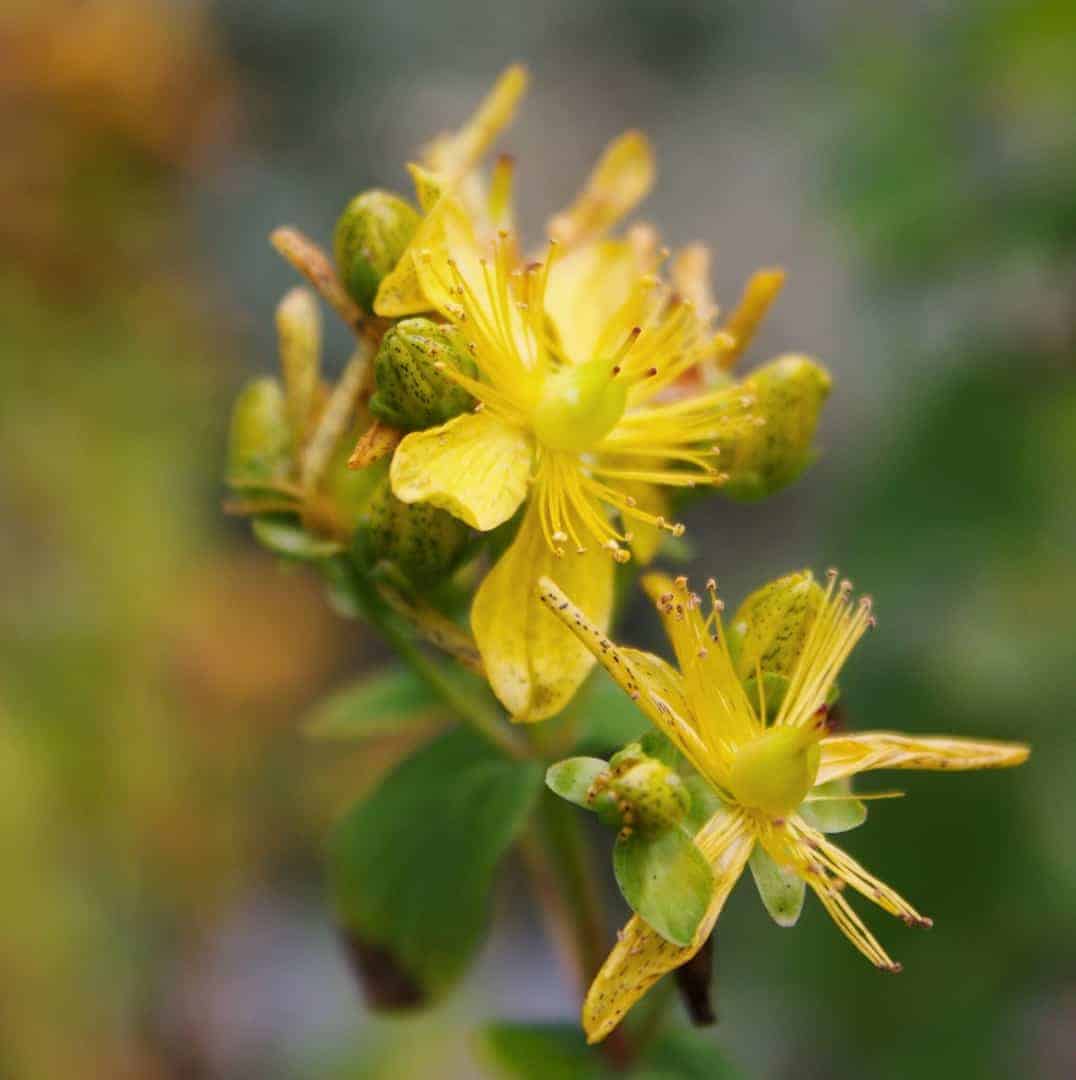
Sustainability
As an herbalist, it is your responsibility to use sustainable plant sources for your herbal remedies. Through this, you infuse integrity into your herbal creations and honor the Earth that provided you with its medicine. This aspect of sustainability is another reason why I love working with herbal-infused oils. Compared to pure extracted essential oils, which require a ton (literally) of plant material, water, and expensive equipment shipped from around the world, herbal infused oils are incredibly sustainable can be made with a handful of herbs you can pick from your backyard garden and prepare in your kitchen, leading to fewer side effects on the Earth.
Many companies today use complex marketing strategies to push essential oils onto people, and there is quite the hype surrounding them as well. However, the traditional approach of drawing out aromatic compounds from a plant and infusing them into a carrier oil produces a safer, powerful, effective, affordable, and far more sustainable alternative.
How Do You Use Them and What Are the Benefits?
The herbal approach is not to wait until you are sick enough to need medicine, but to find ways to connect with herbs daily to nourish and strengthen your body regularly. Incorporating herbal-infused oils into your daily life is an excellent way to do this. You can use them for first aid, such as burns, cuts, bruises, and general aches and pains you feel in your body.
Abhyanga, the Ayurvedic practice of self-oil massage, is an amazing way you can incorporate herbal-infused oils into your daily regimen. Since your lymphatic system and nervous system lay beneath your skin, massaging your skin daily with infused oils cleanses your lymph, stimulates your immune system, and supports a feeling of calm and relaxation through nourishing your nervous system.
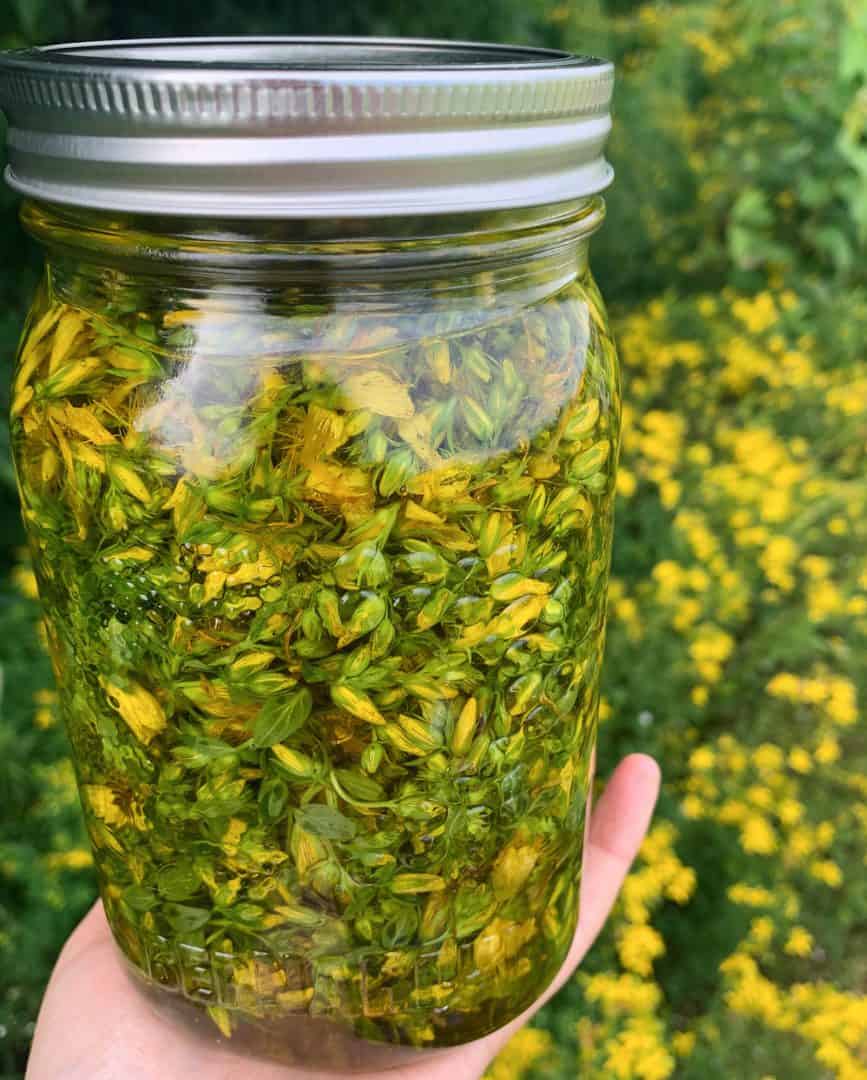
Practicing self-oil massage is incredibly grounding, and touching your body each day is an empowering way you can connect with your body, develop a deeper relationship with it, and increase your awareness of its natural cycles. Many people are not taught how to be in touch with their bodies or are dissuaded from doing so. Using herbal-infused oils is a simple modality you can use to get in touch with it. When you practice oil massage, you feel your skin, notice your pulse, check the tone of your muscles, and become aware of any aches and pains. Using herbal infused oils teaches you how to develop the skill of observing your body and learning to listen to what it needs.
Although herbal-infused oil may not be the first medicine that comes to mind when you think of herbalism, it is one of the best-kept secrets for keeping your body healthy. Another advantage to using herbal-infused oils compared to an infusion is that the latter needs to be made daily, while an oil can last you the entire year. This makes it an accessible way to work with herbs daily if you don’t have the time to prepare something new each day.
To reap the benefits of herbal-infused oils, you will need to use a lot of oil regularly. Herbal-infused oils are often sold in small amounts and with high price tags. Because of this, the best way you can take advantage of the healing properties of herbal-infused oils is to make them yourself. Once you see how easy it is, herbal-infused oils will become a staple in your home apothecary.
The Herbalist’s Mission
“The cultural healing and awakening happens through herbal medicine and simple home remedies you can make yourself” – Kami McBride
Working with herbs isn’t about having your mail courier deliver Elderberries (Sambucus spp) to your door. It’s about celebrating the harvest and sharing joy over Earth’s bounty. This is how we create a culture that honors and celebrates the land. By gathering with people and making medicine that acknowledges the harvest, you create a culture that is deeply rooted in loving the Earth.
Herbalism is so much more than just working with herbs. It’s about caring for the Earth, reclaiming your connection with it, and recognizing that you are a part of the entire ecosystem. Being an herbalist means becoming responsible for your life, land, and the space between that you can influence for the better. It’s about stewardship for our living planet, awakening people, and influencing our culture to live mindfully and sustainably.
You may feel a peak experience from working in a garden, but peak experiences don’t necessarily lead to transformation. It’s up to you to take those experiences of being in love with the Earth and using them to transform who we are as a culture. It is from this place of love and awe for the Earth that we will change the face of the culture into one that grants our planet the right to persist, regenerate, and evolve.
Making herbal medicines in your kitchen is a simple way that you can facilitate change and empower people to use traditional folk methods to heal themselves and the ones they love while leaving a smaller footprint on the planet.
Kami McBride is the author of The Herbal Kitchen and the popular online course Handcrafting Healing Herbal Oils which is now open for enrollment, see below for details. She is a clinical herbalist graduate of the Southwest School of Botanical Medicine and has taught herbal medicine at UCSF School of Nursing. Kami suffered from a life-threatening medication side effect when she was a teenager, which propelled her into the world of herbs at a young age, even though herbal remedies were not popular at the time. Since then, she has helped thousands of families learn to use herbs for self-care. Kami is dedicated to fueling the home herbalism movement to revitalize our relationship with the plant world.
Kami offers online courses where she teaches and empowers people around the world to make their own herbal-infused oils so they can enrich their and their loved ones’ lives with this form of plant medicine. Herbalism is a folk art, and although there are different approaches for preparing plant medicine, Kami shares with you the techniques she has used to treat thousands of clients over the last three decades.


